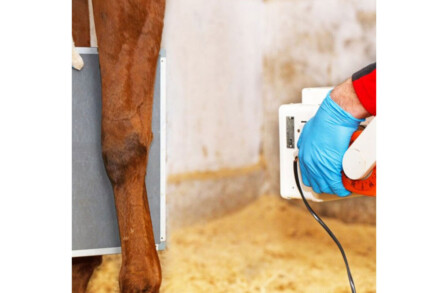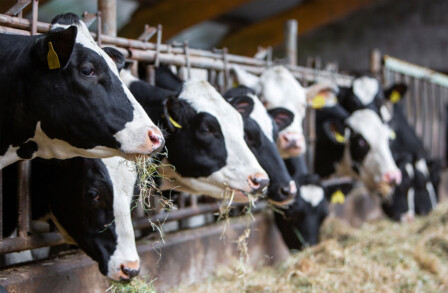Increase your knowledge with this eclectic collection of science-focused snippets, articles, video summaries and papers aimed at keeping you in the picture!
Scientific Snapshots
Weaning in dairy calves is associated with a transition from a liquid to a solid diet and with multiple stressors, including increased gastrointestinal (GI) permeability, reduced immune function of the GI tract epithelium, decreased intestinal absorptive capacity, and increased respiratory disease. These stressors often lead to reduced weight gain during weaning.
Bovine colostrum replacer supplementation may assist this transition during weaning by improving intestinal integrity and GI...
Sponsored by


Positive reinforcement has been used for decades to train dogs, and this training technique has been shown to be significantly more effective than punishment. Dairy cattle are handled often for veterinary care and other management procedures, which can be stressful for the animal and dangerous for the handler should the cattle respond with fear. Little research has looked at positive reinforcement training in farm animals, but a new study published in the Journal of Dairy Science indicates...
Sponsored by


The prevention of diseases in the early stages of calf
rearing is of fundamental importance. The onset of diseases often requires the
administration of antimicrobials, but reducing their use in animals is
currently a priority. Pegbovigrastim is a drug known for its immunoregulatory
action in cows, but its function in calves has not been fully studied. The aim
of the authors of this prospective study was to investigate the effects of
pegbovigrastim administration on the nonspecific immunity of...
Sponsored by


The goals of this retrospective case series were to describe the surgical technique and clinical outcome of small ruminants treated for obstructive urolithiasis using a modified tube cystostomy (MTC) technique.
The database has identified small ruminants that underwent MTC for treatment of obstructive urolithiasis at Colorado State University, Kansas State University, and the University of Missouri between March 2018 and March 2023
Animals were diagnosed with obstructive urolithiasis on the...
Sponsored by


Cytology of airway samples is sensitive for diagnosis of exercise-induced pulmonary haemorrhage (EIPH), but the association between tracheal wash (TW) and bronchoalveolar lavage fluid (BALF) is unknown. The objective of this study was to determine whether diagnosis of EIPH, using haemosiderophages/macrophages (H/M) ratio, differs when based on TW or BALF.
A prospective cross-sectional study was conducted on 102 standardbred horses in training. TW and BALF were collected concomitantly from all...
Sponsored by


Racecadotril, used as an antidiarrheal drug in humans and some animals such as the dog, inhibits peripheral enkephalinase, which degrades enkephalins and enkephalinase inhibition induces a selective increase in chloride absorption from the intestines.
The study material consisted of 46 calves with infectious diarrhea and 14 healthy calves in the age 2-20 days. The calves were divided into eight groups; healthy calves (HG), healthy calves administered racecadotril (HRG), calves with...
Sponsored by


Background: The diagnostic value of plain radiography for diagnosing synovial penetration in limb wounds near synovial structures has not been determined.
Objectives: To assess diagnostic accuracy of plain radiography to identify synovial penetration in horses with traumatic limb wounds.
Study design: Retrospective case study.
Methods: Case records of horses presented to the Faculty of Veterinary Medicine of Ghent University (2011-2021) with limb wounds near synovial structures were...
Sponsored by


Squamous gastric ulceration is a highly prevalent condition in horses used for racing, sport and reproduction. Studies have shown squamous ulceration to affect 70%–95% of horses in race training, 58% of active show horses, 40% of western performance horses and 67%–77% of Thoroughbred broodmares.1 Horses affected with equine gastric ulcer syndrome (EGUS) can show a variety of clinical signs including inappetence, poor body condition, weight loss, behaviour changes or poor performance, while...
Intestinal strangulation is constriction of the intestine by a band of tissue, ligament or blood vessel causing partial or complete intestinal obstruction. This retrospective study describes the clinical, laboratory and ultrasonographic findings, treatment and outcome of 60 cows with intestinal strangulation.
Data showed that general condition was abnormal in all cows (60/60), 23.3% (14/60) had nonspecific signs of pain, 40% (24/60) had signs of colic and 48.3% (29/60) had signs of somatic...



 03:00 min
03:00 min








